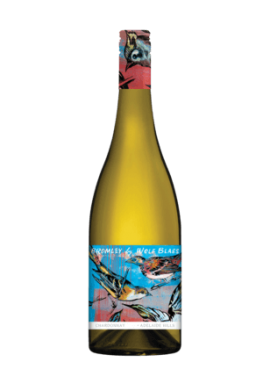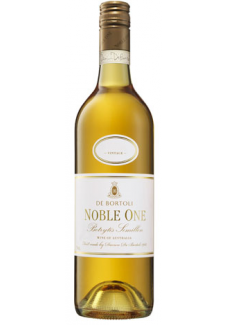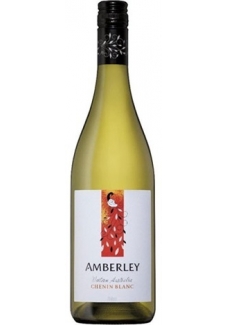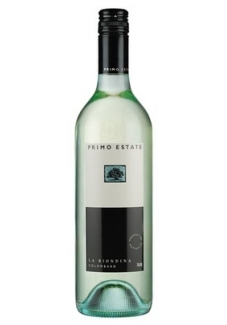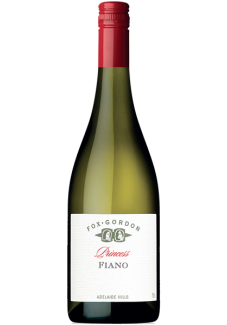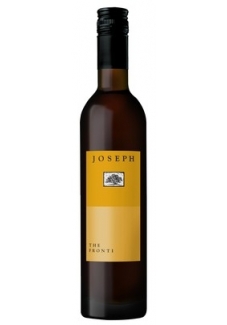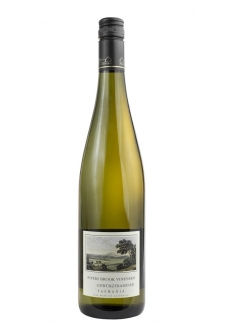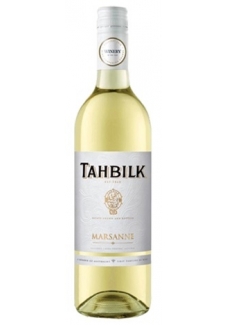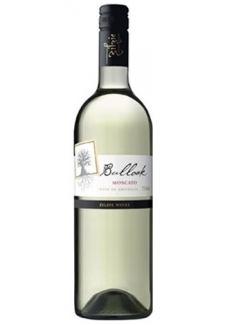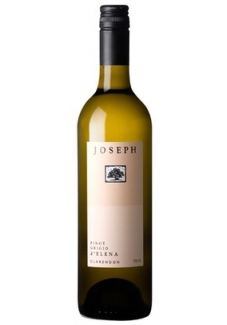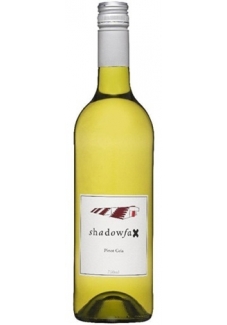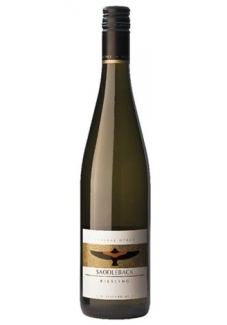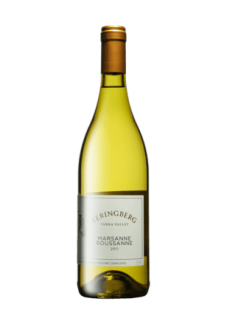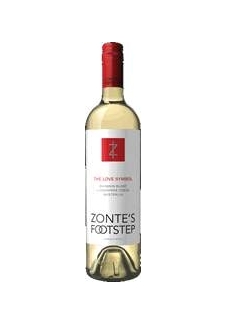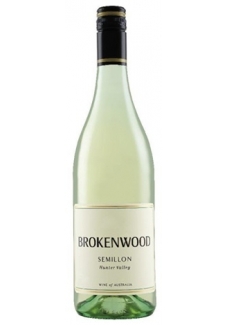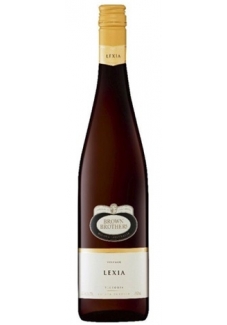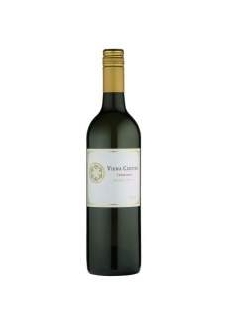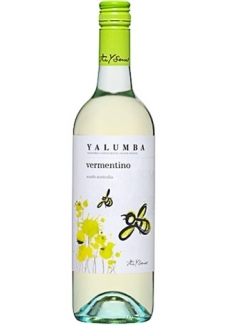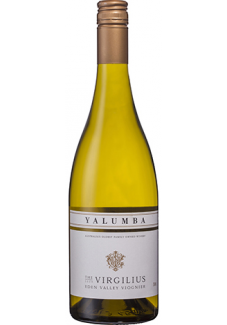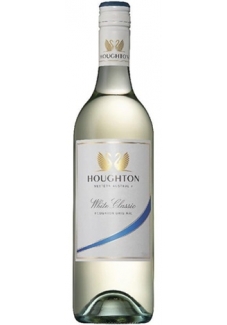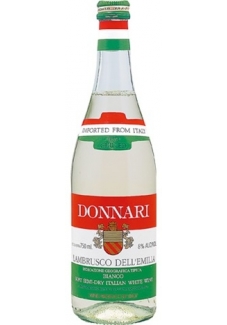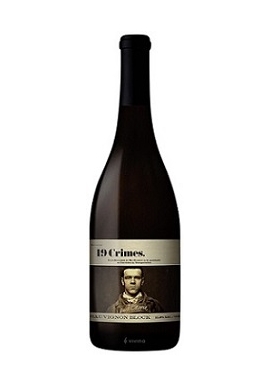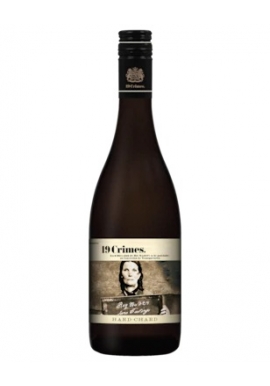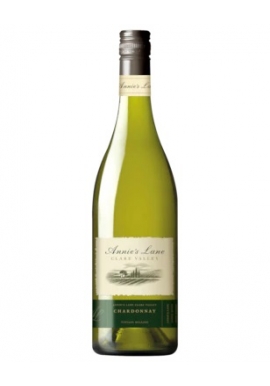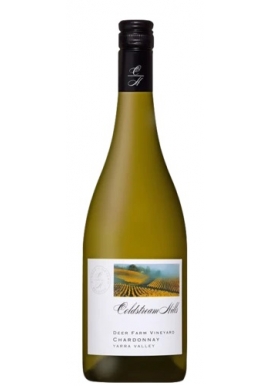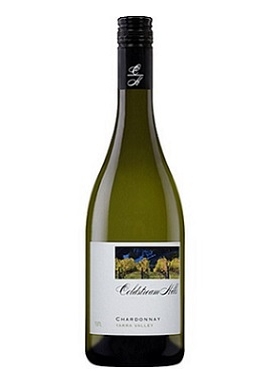AUSTRALIAN WHITE WINES
- Botrytis Sweet
- Chablis
- Chardonnay
- Chardonnay Unwood
- Chenin Blanc
- Colombard
- Dry Whites
- Fiano
- Frontignan
- Gewurztraminer
- Marsanne
- Moscato
- Petit Manseng
- Pinot Grigio
- Pinot Gris
- Riesling
- Roussanne
- Sauvignon Blanc
- Savagnin Blanc
- Semillon
- Spatlese Lexia
- Trebbiano
- Verdelho
- Vermentino
- Viognier
- White Burgundy
- White Lambrusco
Australian white wine grape varieties generally smell and taste like citrus and other tree fruit, like lemon, orange, grapefruit or apple. In mature white wines, or in sweet white wines, we can often taste more exotic or tropical fruit, like pineapple, mango, apricot, pear, melon and lychees. White wines also have odours and tastes such as miner...
Australian white wine grape varieties generally smell and taste like citrus and other tree fruit, like lemon, orange, grapefruit or apple. In mature white wines, or in sweet white wines, we can often taste more exotic or tropical fruit, like pineapple, mango, apricot, pear, melon and lychees. White wines also have odours and tastes such as mineral, spice, herbs, tobacco, hay, yeast, honey, caramel and nuts. The tastes comes from either the grape variety, the yeasts if indigenous yeasts are not used to start fermentation, the fermentation period, or the oak used for ageing.Chancellors Cellars is proud to present an extensive list of Australian and International wines.
Unlike Europe, Australia is not governed by the strict wine laws imposed on European wine growers, who are restricted to growing certain grapes in certain areas. The result is that while France for example has thirteen (13) wine growing regions, Australia has in excess of thirty five (35). The freedom to experiment outside these restriction in the Antipodean New World has also led to an entirely fresh crop of tastes and textures of wine. Chancellors Cellars aims is to provide you with a fascinating tour of both International and Australian wines.Of course, each state and within that state in Australia, or in the case International wines regarding provinces each region has its unique soil, climate and levation that gives that varietal wine its uniqueness, flavour, texture, and palate. For many wine connoisseurs who may suggest which wines to choose to drink can be very helpful.
These consist of wines for immediate drinking which generally applies to cheaper, budget quaffing wines - Hunter Verdelho, Barossa Semillon, almost all Riesling, Adelaide Hills Sauvignon Blanc, most Chardonnay, Chambourcin, Pinot Noirs, Shiraz, and Cabernets. No doubt there are wines for the medium term that require storage and cellaring from five (5) to ten (10) years. Generally this applies to medium priced wines such as Margaret River Chardonnay, Clare and Eden Valley Rieslings, Hunter Semillon, South Australia Shiraz, Margaret River Cabernet, Great Western wines from Bests, Central Victoria wines from Tahbilk and Heathcote wineries, Barossa Shiraz, McLaren Vale Shiraz.Wines for longer term storage that is ten years plus (10 plus). This generally applies to the best examples of each being: Hunter Semillon, Leeuwin Estate Chardonnay, Clare and Eden Rieslings, Tahbilk Marsanne, Rutherglen special and rare sweeties which will last for ever. Yarra Pinot Noir, Yarra Cabernet blends, Bests Great Western range Reds, Coonawarra cabernets especially Wynns and Barossa Shiraz. Overall the Western Australia wine region consists of the following:- Swan District, Perth Hills Blackwood Valley, Geographe, Great Southern Margaret River and Pemberton, these region represent some of the most revered wines made. critics the world over applaud the cabernets produced in Margaret River.
AUSTRALIAN WHITE WINES There are 30 products.
Subcategories
-
Botrytis Sweet
Botrytis cinerea is one of number of different fungi that can cause bunch rot in grapevines. Botrytis rot is a weather-driven disease that can cause significant loss of grape yield and quality, even after application of a full program of fungicides.
Botrytis spores are almost always present in vineyards. Infection can be initiated from spores carried over from the previous season, in sources such as cane debris, bunch remnants, tendrils, leaf petioles and leaf blades. Important sources of infection in growing vines are infected damaged leaves, decaying floral parts (mainly caps) and aborted and rotting berries.
The fungus can rest in a quiet (latent) state and then resume growth when the developing berry begins to soften. After latent botrytis resumes its invasion of a grape berry, it can then spread from berry to berry, which is especially rapid in compact bunches of thin-skinned varieties. Botrytis also spreads readily from bunch to bunch in crowded fruit zones.
The noble rot of Botrytis - There is a an unparalleled range of 'stickies' available and it is this diversity that means many transcend the obvious synergy with desserts to marry with cheeses and terrines, including foie gras. Indeed, at Chancellors Cellars we showcase late harvest styles; and those made from grapes infected with noble rot or botrytis, including De Bortoli Noble One Botrytis Semillon from the Riverina in NSW. This is the pinnacle of Australian sweet Semillon, a grape traditionally found in Sauternes. Botrytis also known as Nectar of the gods
-
Chablis
Chablis wines are usually good steely wines,aggressive and lean when young,but nutty and rounded, though still very dry, after a few years.Modern Chablis is generally a softer,milder wine,easy to drink young, and sometimes enriched with aging in new oak barrels.
The history of the Chablis region is the northernmost wine district of the Burgundy region in France. The cool climate of this region produces wines with more acidity and flavors less fruity than Chardonnay wines grown in warmer climates. These wines often have a "flinty" note, sometimes described as "goût de pierre à fusil" ("tasting of gunflint"), and sometimes as "steely". The Chablis Appellation d'origine contrôlée is required to use Chardonnay grapes solely.
The grapevines around the town of Chablis make a dry white wine renowned for the purity of its aroma and taste. In comparison with the white wines from the rest of Burgundy, Chablis wine has typically much less influence of oak. Most basic Chablis is unoaked, and vinified in stainless steel tanks.
The amount of barrel maturation, if any, is a stylistic choice which varies widely among Chablis producers. Many Grand Cru and Premier Cru wines receive some maturation in oak barrels, but typically the time in barrel and the proportion of new barrels is much smaller than for white wines of Côte de Beaune.
-
Chardonnay
Chardonnay more than almost any other grape Chardonnay responds to different climatic conditions and to the winemaker's art.This,plus the relative ease with which it can be grown, accounts for the marked gradation of flavours and styles, from steely,cool climate austerity to almost tropical lusciousness.
The relatively sharp end of the spectrum is one of the best choices for simple fish dishes, most Chardonnays are superb with roast chicken or other white meat, the really full, rich,New World blockbusters need rich fish and seafood dishes. Oaky Chardonnays are good choice for smoked fish.
Chardonnay grows very well in most regions of Australia what may be more appropriate for this grape is to name a few of the proven practitioners.
-
Chardonnay Unwood
Unwooded Chardonnay can reach great heights of interest with complex layers of flavours of peach, fig , butterscotch and vanilla oak unfolding across the tongue to impress the most discerning wine drinker.
Most popular is its dry, full - bodied white form, much chardonnay is now bottled without having been matured in oak barrels and is accordingly labeled 'unwooded' or 'unoaked'.
-
Chenin Blanc
Chenin blanc is a white wine grape variety from the Loire Valley of France. Its high acidity means it can be used to make everything from sparkling wines to well-balanced dessert wines, although it can produce very bland, neutral wines if the vine's natural vigor is not controlled. Outside the Loire it is found in most of the New World wine regions; it is the most widely planted variety in South Africa, where it is also known as Steen.
The grape may have been one of the first to be grown in South Africa by Jan van Riebeeck in 1655, or it may have come to that country with Huguenots fleeing France after the revocation of the Edict of Nantes in 1685. Chenin blanc was often misidentified in Australia as well, so tracing its early history in the country is not easy. It may have been introduced in James Busby's collection of 1832, but C. Waterhouse was growing Steen at Highercombe in Houghton, South Australia by 1862.
It provides a fairly neutral palate for the expression of terroir, vintage variation and the winemaker's treatment. In cool areas the juice is sweet but high in acid with a full-bodied fruity palate. In the unreliable summers of northern France, the acidity of under ripened grapes was often masked with chaptalization with unsatisfactory results, whereas now the less ripe grapes are made into popular sparkling wines such as Crémant de Loire. The white wines of the Anjou AOC are perhaps the best expression of Chenin as a dry wine, with flavors of quince and apples.
In nearby Vouvray AOC they aim for an off-dry style, developing honey and floral characteristics with age. In the best vintages the grapes can be left on the vines to develop noble rot, producing an intense, viscous dessert wine which may improve considerably with age.Chenin Blanc an important variety in France and producing some good dry whites in Australia with tropical fruits and fruit salad characters.
-
Colombard
Colombard is a white wine variety that is used extensively in the Charente region of South Western France, mainly for material to be distilled for Cognac. But it has a wider role in South West France where it is often used for blended wines.
It is also quite popular in California and South Africa.In Australia Colombard is the fifth ranking white variety in terms of volume produced, but almost all of the wine is sold as generic cask wine. The attraction of varieties like Colombard is that they are capable of producing heavy crops of grapes.
Under these conditions it is inevitable that the resulting wine will lack flavour and body.The exception perhaps is Primo Estate whose La Biondina Colombard is highly regarded. This further reinforces the point that many varieties with a reputation for producing large volumes of ordinary wine, with care and skill in the vineyard and winery, can be capable of producing interesting wine.
-
Dry Whites
Dry White wines have less sugar. It also means that there is more alcohol. Dry and medium dry whites, with there crisp and energizing acidity, make them a natural complement to many foods.Many people favor dry whites over any other type of wine.
Wines like Sauvignon Blanc, Pinot Grigio, and Riesling are produced around the world, and wine drinkers value them for their crisp flavors and easy ability to pair with foods. You can drink dry whites any time of year, but they are especially refreshing during the warm months of summer. With so many varieties of dry white wine, there's a white that suits almost any palate.
Don't let the term "dry" intimidate you. While dry whites have little sweetness, most are very accessible. They are especially wonderful when chilled to the correct temperature and served with foods that complement their flavors and aromas. If you're new to wine, seek expert advice from restaurant staff or the local wine shop, who can steer you to some of the best dry white wines available.
-
Fiano
Fiano hails from the Campania region in southern Italy but has a bright future in Australia. The warm climate of McLaren Vale on the coast just south of Adelaide seems to suit the grape really well. Exotic aromas of pear, nectarine, red apple and tangerine lure you in before similar flavours lead in to a smooth texture and mouth-watering, yet balanced, acid. It also has a lengthy, refreshing ginger and nectarine finish.
It’s easy drinking, yet a serious wine.Relatively free of the heat spells of the previous vintages, the wines are a testament to this. Fiano is a relatively new variety to Australia, and originates from the Campagna region of Italy. A very interesting variety, being able to maintain acidity in the grapes,even in our South Australian summers.
This minimal intervention Fiano is made with indigenous yeasts, and has no added acid. The Fiano has been made without the use of oak.Australian white wine grape varieties generally smell and taste like citrus and other tree fruit, like lemon, orange, grapefruit or apple.
In mature white wines, or in sweet white wines, we can often taste more exotic or tropical fruit, like pineapple, mango, apricot, pear, melon and lychees. White wines also have odours and tastes such as mineral, spice, herbs, tobacco, hay, yeast, honey, caramel and nuts. The tastes comes from either the grape variety, the yeasts if indigenous yeasts are not used to start fermentation, the fermentation period, or the oak used for ageing.
-
Frontignan
In Australia also known as Muscat à petits grains, Brown Muscat or Frontignac. This variety has many different names all over the world. In France it is also known as Muscat Blanc (de Frontignan), Muscat à petits grains or Muscatel, in Portugal as Muscatel Branco, do Douro etc., in Spain as Moscatel Menudo Branco, Bruno etc., in Italy as Moscato Bianco, d’Asti etc. and can be recognised in Muskat, Muskatel, Muskateller etc. in Germany and Austria.
History has it as the oldest grape variety known, probably originating in Ancient Greece and then carried through Italy into Roman France, it is recorded as being exported from the port of Frontignan in South-West France during the reign of Charlemagne. Muscat de Frontignan was introduced into Australia in the Busby Collection of 1832 and endorsed by Macarthur in 1844 as a suitable variety for Australian conditions. It's geographical distribution of the Muscat de Frontignan is widely distributed but not always grown in large quantities, and while there is a stable white variety there are other sub-species which produce grapes of the three colours red, rosé and white on the same vine irregularly.
It appears that the stable white variety is more common in Europe and the irregularly coloured sub-species more common in Australia and South Africa. Muscat de Frontignan is present in Mediterranean France, in Hérault, the Pyrénées Orientales and Bas Languedoc, though plantings decreased greatly after the outbreak of phylloxera. The variety is also present in Italy, Spain, Hungary, Samos (Greece), the U.S.A., especially California, Argentina, South Africa and Australia.
-
Gewurztraminer
Gewurztraminer is both spicy and perfumed. Gewürztraminer has the weight and flavour to go with such hard to match dishes as choucroute and smoked fish. It is also a good choice for Chinese or any lightly spiced oriental food. Gewürztraminer is replacing the popular sweet and fruity white wine that was sold under the moselle label. The blend of traminer riesling is still made but a few changing the title to allow,multi regional and multi varietal blending.
-
Marsanne
Marsanne is a white wine grape, most commonly found in the Northern Rhône region. It is often blended with Roussanne. In Savoie the grape is known as grosse roussette. Outside France it is also grown in Switzerland (where it is known as ermitage blanc or just ermitage), Spain (where it is known as Marsana), New Zealand, Australia, Canada and the United States.
Marsanne is a rich fat wine but are a bit short of acid so match them with simply prepared chicken,pork,fish,or vegetables.The Marsanne vine has been grown in the Goulburn Valley Victoria since the 1860's and has produced attractive, honeyed,dry white wines.Marsanne is full bodied with almond flavours and a distinctive bouquet of glue.
In climates that are too hot, the grape can overripen and produce wine that is very flabby. In places that are too cool, the grape cannot ripen fully and produces wine with a bland and neutral flavor. In order to maintain a high level of acidity, winemakers try to harvest Marsanne just before it hits full ripeness. Some Australian winemakers prefer to let the grape hang longer on the vine to increase the alcohol level of the wine and its aging potential.
Marsanne produces deeply colored wines that are rich and nutty, with hints of spice and pear. The wines can be high in alcohol and can be oak aged to develop more body. As Marsanne ages, the wine takes on an even darker color and the flavors can become more complex and concentrated with an oily, honeyed texture. Aromas of nuts and quince can also develop.
Marsanne is also known under the synonyms Avilleran, Avilleron, Champagne Piacentina, Ermitage, Ermitage Blanc, Ermitazh, Grosse Roussette, Hermitage, Johannisberg, Marsan Belyi, Marsanne Blanche, Marzanne, Metternich, Rousseau, Roussette de Saint Peray, Roussette Grosse, White Hermitage, and Zrmitazh.
-
Moscato
Muscat wine is called Moscato, Muscatel, Muscadel or Muscadine. The best Muscates come from Portugal, the south of France, the island around Silicy and Australia. Of all the varieties of grapes which are made into wine there is no family which stands apart as unmistakable to everybody. It is the Muscat.
As a grape it is familiar as the tastiest of hot - house varieties.It is used for wine all over the Mediterranean - in Spain, Italy, Africa,Greece and all the islands - and in Portugal, Russia,California and indeed in Australia. The Muscat apparently gets its name from the Italian moscato,which means smelling of musk.
Musk is the scent with which deer attract their mates, a secretion which is collected and used in making perfume.It occurs in many aromatic melons, apples and pears, and even roses, besides grapes. They all have the same haunting, sweet quality which is called musky.
-
Petit Manseng
Petit Manseng is a very interesting grape variety it has a distinct lemon and fruit salad flavour, has plenty of presence,which carries the touch of sweetness.Petit Manseng (sometimes translated: Small Manseng, rarely "Little Manseng") is a white wine grape variety that is grown primarily in South West France. It produces the highest quality wine of any grape in the Manseng family. The name is derived from its small, thick skin berries.
Coupled with the small yields of the grapevine, most Petit Manseng farmers produce around 15 hl of wine per hectare. The grape is often left on the vine till December to produce a late harvest dessert wine. The grape is grown primarily in Gascony, Jurançon and Pacherenc du Vic-Bilh but has recently drawn interest in New World wine regions like California, North Georgia, Virginia, Ohio, and Australia.
The reason is that it is expected to follow Viognier's path to popularity among white wine drinkers.It was already present in Uruguay, when Basque settlers brought "Manseng" and Tannat vines with them to their new home. Despite being easily recognizable as a white grape while true Manseng is a black grape, wine that is Petit Manseng is still normally labeled as just "Manseng". The grape is often left on the vine to produce a late harvest wine made from its nearly raisin like grapes.
-
Pinot Grigio
Pinot Grigio is clean,bright,green and appley, Pinot Grigio is very food friendly and typically full bodied.Classic white wine dishes,modern vegetrian dishes, pasta and pizza all match up well
Pinot gris, Pinot grigio or Grauburgunder is a white wine grape variety of the species Vitis vinifera. Thought to be a mutant clone of the Pinot noir variety, it normally has a grayish-blue fruit, accounting for its name but the grapes can have a brownish pink to black and even white appearance.
The word pinot supposedly could have been given to it because the grapes grow in small pine cone-shaped clusters. The wines produced from this grape also vary in color from a deep golden yellow to copper and even a light shade of pink, and it is one of the more popular grapes for skin-contact wine.
Pinot gris is grown around the globe with the "spicy" full-bodied Alsatian and lighter-bodied, more acidic Italian styles being most widely recognized. The Alsatian style, often duplicated in New World wine regions such as Marlborough, Tasmania, South Australia, Washington, and Oregon, tend to have moderate to low acidity, higher alcohol levels and an almost "oily" texture that contributes to the full-bodied nature of the wine.
The flavors can range from ripe tropical fruit notes of melon and mango to some botrytis-influenced flavors. In Italy, Pinot grigio grapes are often harvested early to retain the refreshing acidity and minimize some of the overt-fruitiness of the variety, creating a more neutral flavor profile. This style is often imitated in other Old World wine regions, such as Germany where the grape is known as Ruländer.
-
Pinot Gris
Pinot Gris France and Pinot Grigio Italy. A member of the pinot family, this grape is producing some fantastic wines in Australia. Or, should we say, a few makers are producing fantastic wines from this grape? Try T'Gallant from the Mornington Peninsula and Seppelt Drumborg, if you like truly dry,chalky whites, you'll love these. More generally the wine is described as medium bodied, soft with either minerally,floral violets,honeysuckle or fruity pineapple flavours
-
Riesling
Riesling sometimes known here in Australia as Rhine Riesling, is considered by many to be the world's finest white wine grape variety.There is much to substantiate this claim. Riesling can be a wonderful drink as a dry,crisp,fresh white and equally intriguing as a sweet dessert style.
It is superb young and freshly bottled, and drunk within six months of harvest,but can be equally impressive when left in the bottle for up to 30 years to develop a marvellous richness of orange marmalade,which builds in the bottle and is quite unlike any other wine.This development can continue for two or three decades in a decent cellar.
Australian riesling are now drier than they used to be but many mistake the natural flavours for residual sweetness. Even if quite sweet, riesling will appear to be dry because of the high level of acid which helps cleans the palate.
Even a young dry wine with a balance of sugar and acid will give a lingering feeling in the mouth with an intense bouquet of apple, lemon and lime, through to steely mineral, cooked citrus marmalade and chalky or dusty characters
-
Roussanne
Roussanne is also a Rhone grape, it has high acidity and a very distinctive aroma of fine herb tea. It is capable of making fine wines as a varietal which,due to the high acidity, age well in the bottle. It is,however,more usually blended, especially with the marsanne, in which combination it contributes acide to complement the marsanne's body. Yeringberg,which has been producing wines since 1863 in the Yarra Valley, produces a marsanne- rousanne blend.
The grape is also planted in various wine-growing regions of the New World, such as California, Washington, Texas and Australia as well as European regions such as Crete, Tuscany and Spain.
The berries are distinguished by their russet color when ripe — roux is French for the reddish-brown color russet, and is probably the root for the variety's name. The aroma of Roussanne is often reminiscent of a flowery herbal tea. In warm climates, it produces wines of richness, with flavors of honey and pear, and full body. In cooler climates it is more floral and more delicate, with higher acidity. In many regions, it is a difficult variety to grow, with vulnerability to mildew, poor resistance to drought and wind, late and/or uneven ripening, and irregular yields.Wines made from Roussanne are characterized by their intense aromatics which can include notes of herbal tea. In its youth it shows more floral, herbal and fruit notes, such as pear, which become more nutty as the wine ages. Roussanne from the Savoy region is marked by pepper and herbal notes. Roussanne wine and Roussanne dominated blends can be drank very well in the first 3 to 4 years of their youth before entering a "dumb phase" where the wine is closed aromatically until the wine reaches 7 or 8 years when it develops more complexity and depth.
-
Sauvignon Blanc
Sauvignon Blanc is a grape that contains one of the most pungent and powerful of aromas in wine. Flavours of passionfruit, gooseberry,lantana, tomcat,asparagus,tomato bush and tinned peas are possible, followed on the palate by very zingy crisp acid.
Sauvignon Blanc grape makes wines with enough bite and sharpness to accompany quite rich fish dishes as being an obvious choice for seafood. The characteristic acid intensity makes a brilliant match with dishes made with tomato, but the best match of all is Sancerre and local Loire goats' cheese.
Try wines from the following regions that are cooler such as Adelaide Hills, South Australia,Margaret River and Great Southern of Western Australia.
-
Savagnin Blanc
Savagnin or Savagnin blanc (not to be confused with Sauvignon blanc) is a variety of white wine grape with green-skinned berries. It is mostly grown in the Jura region of France, where it is made into Savagnin wine or the famous vin jaune and vin de paille.
It is easy to understand why the wines of Jura and the country of Savoie have been pushed into the shadows. Many of the grape varieties grown here — such as the Mondeuse, Poulsard, Jacquere, Alte: Savagnin — are largely unknown outside the region. Some of the styles decidedly unfashionable. There are few brands, and the presence of all well-heeled skiers — the wines' greatest fans — helps to make for prices keep the bottles away from the bargain shelves.While they are close to each other on the map and usually treated as a pair of Jura and Savoie are really quite different.The Jura has some pleasant Pinot Noir and Chardonnay, but the distinctive wines are the Vin Jaune, whose nutty character comes from the effects of a yeast that is allowed to develop on the surface of the grapes while they are in the barrel (you will find out more about this when we take a look at the way sherry is made in Spain), and the sweet raisiny Vin de Paille made using the traditional method of allowing the grapes to dry out on straw — paille — before they are crushed. At their best, Savoie's wines are light, fresh, and either floral (white) or berryish (red)Wines are made from Pinot Noir and Chardonnay (Jura) as well as other varieties rarely found elsewhere, such as the Savagnin and Poulsard (Jura), the Mondeuse, Altesse/Roussette, and Jaquere (Savoie).Arbois' Vin Jaune is France's answer to dry sherry. Vin de Paille gets less recognition but can be a very good buy.Winemakers in Jura use the Pinot Noir grape as well as unfamiliar local varieties.In 2009 it was first discovered that grape growers and wine makers in Australia have been supplying and selling Savagnin wrongly labelled for several years. They thought they were pouring money into the market for the Spanish albarino grape, only to discover this is not the case. From 2009 vintage onward these wines have been labelled Savagnin.
After the mistake was discovered grape growers and wine makers were faced with a choice, whether to persist with Savagnin or to graft their vines over to something else. Fortunately many had already made a couple of vintages and were impressed enough to continue with Savagnin. Australian dry white wines from this variety are often excellent, crisp and light bodied, ideal with appetisers or seafood. They are very similar in style at least to the best Albarino wines from north west Spain.As the wines can't be labelled as "Albarino". The name Savagnin is similar to Sauvignon and hence causes confusion. Some winemakers us fantasy names, for example Soumah use Saverro, and Dalfarras use Savinno.
A visiting French expert raised questions in 2008, and DNA testing confirmed that the grapes are in fact Savagnin sourced from Spanish cuttings. The variety itself may have originated in Spain or France.Savagnin is a very old variety which is believed to have originated somewhere in north east France or in adjacent areas of Germany. There is a substantial number of clones some of which are usually regarded as separate varieties. There are dozens of synonyms, reflecting its age and distribution. Approximately, sixty wineries are using Savagnin in Australia here are some examples;
919 Wines - Riverland, Allinda-Yarra Valley,Angullong Wines -Orange, Bago Vineyards - Hastings River, Banrock Station-Riverland,Bay of Schoals - Kangaroo Island, BK Wines - Adelaide Hills, Box Grove Vineyard - Nagambie Lakes, Brown Brothers - King Valley, Centennial Vineyards - Southern Highlands,Chalice Bridge Estate - Margaret River, Chalk Hill Winery - McLaren Vale, Chapel Hill - McLaren Vale, Chrismont -King Valley, Cirami Estate - Riverland, Coolangatta Estate - Shoalhaven Coast, Coombe Farm Vineyard - Yarra Valley, Crittenden at Dromana - Mornington Peninsula, Crooked River Wines- Shoalhaven Coast,Dalfarras - Nagambie Lakes, Dirt Road Vignerons - Barossa Valley, Doc Adams - McLaren Vale, Drakesbrook Wines - Peel, Feathertop - Alpine Valleys,First Drop - Barossa Valley,G Pattriti & Co - McLaren Vale,Gemtree Vineyards -McLaren Vale, Gestalt Wines - Adelaide Hills,Glandore Estate - Hunter Valley,Golden Ball - Beechworth, Golding - Adelaide Hills,Gracebrook Vineyards - King Valley, Hand Crafted by Geoff Hardy - McLaren Vale, Heritage Estate - Granite Belt,Hollick Wines - Coonawarra, Homestead Estate - Alpine Valleys,Irvine - Eden Valley,Kangarilla Road-McLaren Vale, Landhaus Estate -Adelaide Hills,Mad Dog Wines - Barossa Valley,Mimosa -South Coast Zone, Minko - Southern Fleurieu,Mosquito Hill Wines-Southern Fleurieu,Omersown Wines - Riverland,Parri Estate-Southern Fleurieu,Pikes - Clare Valley,Pindarie Wines - Barossa Valley,Quarry Hill Wines - Canberra, Rileys of Eden Valley -Eden Valley,Rob Dolan Wines - Yarra Valley,Rochford-Yarra Valley ,Rusticana - Langhorne Creek, Rusty Fig Wines -South Coast Zone,Rutherglen Estates- Rutherglen,Sassafras- Canberra,Soumah - Yarra Valley,Stockman's Ridge - Orange,Symphonia - King Valley,Tscharke - Barossa Valley,Tuck's Ridge - Mornington Peninsula,Wine by Sam - Strathbogie Ranges,Zonte's Footstep -Langhorne Creek.
-
Semillon
Semillon are equal to spicy food and rich sauces,often going even better with meat than with fish,sweet Semillon can partner many puddings, especially rich, creamy ones. Semillon also goes well with many cheeses, and Sauternes with Roquefort is a classic combination.Sémillon is widely grown in Australia, particularly in the Hunter Valley north of Sydney, where for a long time it was known as "Hunter River Riesling".
Sémillon, which is relatively easy to cultivate, consistently produces six to eight tons of grapes per acre from its vigorous vines. It is fairly resistant to disease, except for rot. The grape ripens early, when, in warmer climates, it acquires a pinkish hue.Since the grape has a thin skin, there is also a risk of sunburn in hotter climates; it is best suited to areas with sunny days and cool nights.
The Sémillon grape is rather heavy, with low acidity and an almost oily texture. It has a high yield and wines based on it can age a long time. Along with Sauvignon blanc and Muscadelle, Sémillon is one of only three approved white wine varieties in the Bordeaux region.
The grape is also key to the production of sweet wines such as Sauternes. For the grapes to be used for sweet wine production, they need to have been affected by Botrytis (also known as "Noble Rot"). This fungus dries out the grapes, thus concentrating the sugar and flavours in the grape berry.
Four styles of Sémillon-based wines are made there:
a commercial style, often blended with Chardonnay or Sauvignon blanc;
a sweet style, after that of Sauternes;
a complex, minerally, early picked style which has great longevity;
and an equally high quality dry style, which can be released soon after vintage as a vat- or bottle-aged example.
The latter two styles were pioneered by Lindemans, Tulloch, McWilliam's Elizabeth, Drayton's and Tyrrell's, and are considered unique to Australia.Most examples of these bottle-aged Hunter Semillons exhibit a buttercup-yellow colour, burnt toast or honey characteristics on the nose and excellent complex flavours on the palate, with a long finish and soft acid. Young Hunter Valley semillon is almost always a dry wine, usually exhibiting citrus flavours of lemon, lime or green apple. Cooler-year Hunter Semillons seem to be the most highly sought after, with some of the 1974 and 1977 vintages still drinking well. The newer, fruit-accentuated styles are championed by the likes of Iain Riggs at Brokenwood Wines and The Rothbury Estate.
Sémillon is also finding favour with Australian producers outside the Hunter Valley in the Barossa Valley and Margaret River regions. The Adelaide Hills is becoming a flourishing region for Semillon, with the cooler climate producing some wines of great complexity. Vineyards such as Amadio and Paracombe produce some premium blends of the classical style.
-
Spatlese Lexia
Spatlese Lexia is of German origin , meaning late harvest but not matured in oak. Some of these wines have a richness and acidity in such perfect proportions that one instantly think of German wine.
-
Trebbiano
This is a remarkably neutral variety. As Trebbiano, is grown over great swathes of central Italy, and quality wise much depends on the particular clone- Trebbiano di Soave is considered much better than Trebbiano Toscana, for example. Trebbiano plays a part in most central Italian white wines- Soave, Verdicchio, Orvieto, Frascati, and Lugana are all more or less dependent on it.
So there is a certain glamour to Italian wine varieties in Australia these days, but not much of it has rubbed off on Trebbiano. Even Jancis Robinson attaches the label 'undistinguished' to the variety. In France it goes under the name Ugni Blanc. Other synonyms include Spoletino, Perugino, Rusciolo, Bobiolo, Muscadet Aigre, St-Emilion, White Shiraz and White Hermitage.
The variety is planted all over Italy and it is the most commonly used white variety in that country. Trebbiano is high yielding, hence its popularity, and it gives acidity in blends. In France Ugni Blanc is the most widely planted white variety and it is grown in Southwest France for distillation into Cognac and Armagnac due to its high yields and acidity. The variety was popular in Australia, where along with Colombard, it is used to make bulk wines. If you've had a 'Dry White' from a cask made in 'South East Australia' you've had Trebbiano. But with care in the vineyard and careful winemaking some wineries have coaxed some quite good crisp dry white wines from the variety. Just the thing to go with the fish and chips on Friday night.
-
Verdelho
Verdelho is a lot like drinking chardonnay, it is full flavoured with juicy mouthful, often accompany by the gently drying effect of oak. A few styles, especially those originating in Western Australia, will have a more tropical lift.This makes it quite versatile, suitable for teaming with dishes such as roast chicken or pork, seaford with creamy sauce and potato wedges, barbecued seafood like salmon or swordfish and salads.
-
Vermentino
Australian Vermentino white wine grape varieties generally smell and taste like citrus and other tree fruit, like lemon, orange, grapefruit or apple. In mature white wines, or in sweet white wines, we can often taste more exotic or tropical fruit, like pineapple, mango, apricot, pear, melon and lychees. White wines also have odours and tastes such as mineral, spice, herbs, tobacco, hay, yeast, honey, caramel and nuts. The tastes comes from either the grape variety, the yeasts if indigenous yeasts are not used to start fermentation, the fermentation period, or the oak used for ageing.
Vintage Conditions welcome the new varietal to our small batch family - Vermentino. A native of Italy, Vermentino is generating a lot of interest in the wine community due to its heat tolerance, and ability to produce beautiful crisp and fresh wines, perfect for the Australian palate. Oliver's Taranga Vermentino is spot-on, it starts with delicate floral and citrus notes then a burst of vibrancy on the palate. Pale straw with aromas of lemongrass, lime, sea spray and oyster shell. Palate is extremely zippy, light and refreshing. The Thai kaffir lime and zest follows through onto the palate. This Vermentino was made without the use of oak, and is made to drink in the next 12 months- preferably with a plate of fresh seafood.
-
Viognier
Viognier watch this variety.Small plantings exist in various regions of Australia but the variety is already seriously crafted by companies like Yalumba and Kingston Estate.A prime variety of the Cote du Rhone, France and sometimes blended with shiraz to add perfume. In this early stage of its development in Australia,we like it as a good dry white. The shiraz,viognier blend is already available from Clonakilla and is highly regarded.Viognier is at best as an aperitif. It can also go well with spicy Indian dishes.
Aromatic and fragrant, Viognier wine has become a popular drop nationwide thanks to the typical Viognier taste: a rich, ripe, full palate that is also low in acidity. However, according to the experts who have cultivated the variety in Australia since 1980, Viognier wine isn't about to outstrip the likes of Sauvignon Blanc, Riesling, Chardonnay or Pinot Grigio.
Viognier wine is destined to become a more mainstream varietal, perhaps not in quantity but in public recognition. The distinctive Viognier taste, with layers of strong stone-fruit flavours such as apricot, has already attracted a cult following that is steadily growing in restaurants and homes.
-
White Burgundy
White Burgundy is left as the greatest still, dry white wine grown anywhere in the world. Its qualities are essentially savoury ones.The white burgundy's are fresh and refreshing and enticing, the greatest is rich and sappy, dry without exception, but fat with flavour.Its perfume can have a fruitness, a really peach or apricot like quality, without being sweet. It can be either soft and succulent or hard and strong.
Burgundy is in some ways the most terroir-oriented region in France; immense attention is paid to the area of origin, and in which of the region's 400 types of soil a wine's grapes are grown. As opposed to Bordeaux, where classifications are producer-driven and awarded to individual chateaux, Burgundy classifications are geographically-focused. A specific vineyard or region will bear a given classification, regardless of the wine's producer. This focus is reflected on the wine's labels, where appellations are most prominent and producers' names often appear at the bottom in much smaller text.
The main levels in the Burgundy classifications, in descending order of quality, are: Grand crus, Premier crus, village appellations, and finally regional appellations.
-
White Lambrusco
Real Lambrusco is very different, low in tannin, yes,but dry,full of strawberry fruit,high in acidity,and with pungent twist of bitterness on the finish.White Lambrusco has a fruity flavour, the white has a touch of spritz which helps to make it a very refreshing style. Served well chilled, it is an ideal easy drinking wine for a warm Summer's day.
-
$115.95
19 Crimes Block Sauvignon Blanc 750ml x 6... 19 Crimes Block Sauvignon...
19 Crimes Block Sauvignon Blanc is zesty, vibrant and light but unique in character, this approachable Sauvignon Blanc is filled with aromas of passionfruit, grapefruit, gooseberry and guava. 19 Crimes Block Sauvignon Blanc is...
-
$115.95
19 Crimes Hard Chardonnay 750ml x 6... 19 Crimes Hard Chardonnay...
19 Crimes Hard Chardonnay straw yellow colour with lifted aromas of stonefruits, peaches & cream, and spicy oak. 19 Crimes Hard Chardonnay straw...
-
$179.95
Abel's Tempest Chardonnay 750ml x 6... Abel's Tempest Chardonnay...
Abel's Tempest Chardonnay spent nine months maturation in a combination of new and seasoned French oak. Abel's Tempest Chardonnay palate is full and generous with a soft texture, underpinned by lemon citrus fruits, nectarine flavours and the subtle oak adds beautiful complexity. Abel's Tempest Chardonnay spent nine...
-
$145.95
Annie's Lane Chardonay 750ml x 6 Clare... Annie's Lane Chardonay...
Annie's Lane Chardonnay produce has toasty nutty oak flavours that perfectly complement the rich melon, baked fig varietal characters of the grape in this soft, full-flavoured Chardonnay. Annie's Lane Chardonnay produce has...
-
$145.95
Annie's Lane Riesling 750ml x 6 Clare... Annie's Lane Riesling 750ml...
Annie's Lane Riesling from the Clare Valley Region of South Australia shows attractive varietal aromas of citrus and floral notes. Annie's Lane Riesling from the Clare...
-
$89.95
Bindi Chardonnay 2002 Macedon Ranges... Bindi Chardonnay 2002...
Bindi produces a complex rich and notably long lived Chardonnay. Mostly deeply coloured of all wines, and showing what appears to be some botrytis influence. Bindi Chardonnay has bright and fresh aromatics with lemon grass, wild flowers, wet pavement and intensity of stone fruit and citrus. Power-packed palate with concentration and vitality - acidity... Bindi produces a complex rich and...
-
$309.95
Coldstream Hills Rising Vineyard Varietals... Coldstream Hills Rising...
Coldstream Hills Rising Vineyard Varietals Chardonnay has distinctive notes of nectarine, citrus blossom and quince. Coldstream Hills Rising Vineyard Varietals Chardonnay secondary notes of nougat and wet slate add complexity with subtle French oak providing support in the background. Coldstream Hills Rising Vineyard...
-
$309.95
Coldstream Hills Single Vineyard Deer Farm... Coldstream Hills Single...
Coldstream Hills Single Vineyard from the Yarra Valley Region of Victoria,has been consistently producing excellent Yarra Valley Chardonnay for years and if anything it keeps getting better. Stone fruit and grapefruit characters are supported by creamy nutty oak. Coldstream Hills Single Vineyard from...
-
$235.95
Coldstream Hills Varietals Chardonnay... Coldstream Hills Varietals...
Coldstream Hills Varietials Chardonnay has stone fruit and grapefruit characters which are supported by creamy nutty oak. Coldstream Hills Varietials...
ABN: 11 806 263 393
Liquor Licenses
337 526 06
360 674 16
